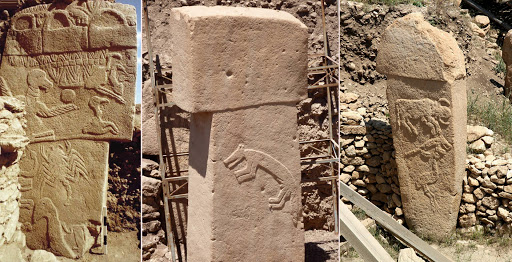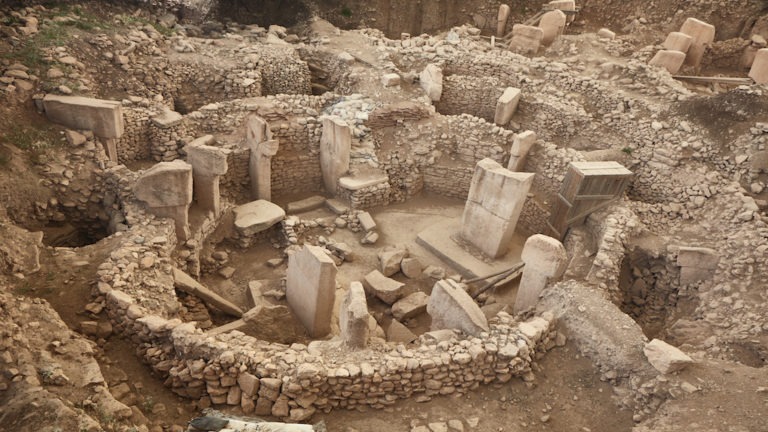Gobekli Tepe has made lots of people scratch their heads. Even though it was uncovered during the ‘60s, it’s significant impact was just fully realized in 1994. This historical site is situated in the southeastern part of Turkey, approximately 12km northeast of the city of Şanlıurfa. Despite this, it predates the country’s establishment by a huge margin. This archaeological site has existed for so long that it rewrites people’s understanding of not just the history of Turkey but also the history of mankind. If we base facts on previous knowledge about how modern civilization started then Gobekli Tepe must not be there. However, this place truly exists and has been around for almost 12,000 years.
Gobekli Tepe has become a tourist attraction for years now but it’s still under archaeological study. Turkey’s current political issues have made things harder than usual. Despite this, the historical site has been a source of pride for locals and some parts of the area are being restored. Gobekli Tepe, if all evidence is considered, is the oldest significant site that was made by human beings. This, in turn, has made the place one of the most significant archaeological discoveries in history.

Almost 12,000 Years Old and Abandoned for 9,000 Years
The archaeological site of Gobekli Tepe is a head-scratcher due to a lot of reasons. The excessive ancientness of this place has made it all the way much weirder. The time of construction of Gobekli Tepe is traced as far back as 12,000 years. This is a time period that is already pre-civilization. If analyzed, this time period coincides with the period of the end of the last ice age. The place was then utilized by an active civilization for 3,000 years then abandoned 9,000 years ago. The reason for its abandonment is still a huge mystery to this day.
Remains Backfilled by Same Builders of the Site
The archaeological study on Gobekli Tepe is a continuing process due to the complex revelations that the site presents. Structures that compose the site are incredibly well-preserved and this has allowed archaeologists to study them similarly as based on their original state. Turkey’s climate has helped in Gobekli Tepe’s remarkable preservation. However, one startling factor of its preservation is the way that the temple sites seemed to have been backfilled. The backfilling of the place before being abandoned is still a mystery. The backfill protected the structures from different elements and this helped preserve the state of Gobekli Tepe. Who would have known that people of today would still be able to discover this archeological site?
Predates Sumer and Stonehenge By Over 6,000 Years
If you still haven’t grasped how old Gobekli Tepe is, take Stonehenge for instance, and add 6,000 years more to it. That is how ancient the site of Gobekli Tepe is. Stonehenge is popular for showcasing prehistoric construction feats by humans. Take into consideration that there is an unearthed area older than Stonehenge by 6,000 years is already mind-boggling. Another basis for comparison is the era of Sumer, this is where writing has been considered to be invented. Gobekli Tepe is also older with a margin of 6,000 years.

Impressive Architecture for Its Age
Gobekli Tepe is not only astounding for its age but also for its architectural style as seen on the details of the “temples”. The construction quality and craftsmanship in Gobekli Tepe are way ahead of its time. Another head-scratcher is how could a construction like this even be able to stand for a long time if construction should not have even been possible at this time. The architecture, engineering, and even project managing needed to accomplish this ancient site are truly mind-blogging if you analyze the state of human civilization during this period. Gobekli Tepe has impactfully forced archaeologists to re-study the true dawn of civilization.
Building It Required Monumental Effort
Gobekli Tepe is a huge construction project even for modern standards. The requirement for manpower would take hundreds just to be able to construct the huge temples. This also required a significant amount of time. The possibility of this construction is only feasible if there was an organized social structure in place. Up until this day, modern people might not understand fully the intelligence of the people behind Gobekli Tepe.
Already Unearthed During the ‘60s but only Realized to be Significant in 1994
Gobekli Tepe was already discovered but it was kept ignored for almost 30 years. No one truly realized the significance of its existence until 1994. It was previously assessed as only a medieval graveyard. It was basically “rediscovered” back in 1994 and the traits of the site significantly made an impact on archaeologists ever since. A German archaeologist named Klaus Schmidt led the charge of this rediscovery.
Learn more about Klaus Schmidt here:
Composed of the Oldest Religious Structures
Archaeologists have considered Gobekli Tepe as a religious structure. This instantly makes it the oldest temple in the world. The age of its existence holds a large margin between the next oldest religious structure in the world. This place being a massive religious construction adds more mystique.
Stones Weight Tens of Tons
At its center, there are huge pillars topped with massive stone blocks. The massive pillars weigh tens of tons. Estimates even range from 20 to 60 tons. Placing these blocks in place is already a mind-boggling task. How could ancient humans place these blocks perfectly? That is quite a daunting question. It would take intelligent ancient engineers to construct the whole place.

Stones Were Decorated With Drawings and Carvings
A lot of the stones in Gobekli Tepe have artistic value. The central pillars can be seen with decorations of elaborate drawings, mostly of animals. There are also intricate animal statues that were carved onto the surface of a pillar. This is the art that is way ahead of its time.
Gobekli Tepe is still an on-going archaeological study but the findings of this mind-boggling site showcased a series of answers but also a series of questions that challenge the dawn of civilization. Our old understanding of ancient architecture, engineering, and social structure are being questioned by this one significant archaeological mystery.


